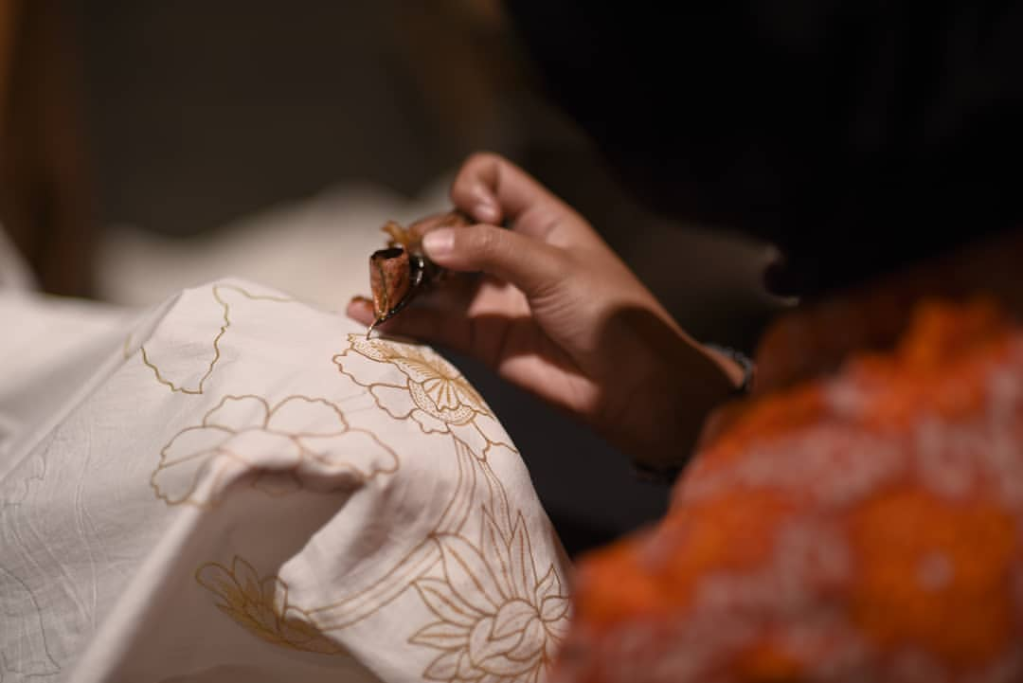Batik, an elaborate Javanese artistic process of creating designs on fabric, is one heritage industry that can be found in Malaysia. When you are exploring the Suria KLCC shopping mall, you will often spot batik prints expressed in various forms – notebooks, dresses, bags, shirts, scarfs, sarongs, food packaging and many others. It is one long growing list.

The batik craftsmanship is a method of painting and decorating a spread of cloth, beginning with an outline of the design using hot wax while the space without wax is filled with different colored dye. The designs tend to be styled based on abstract swirls, flower motifs or plant designs. As simplistic as it sounds, the process can be drawn out depending on the complexity of the art.

What you should know is, there has been an air of what has been termed, the ‘cultural feud’ between squabbling nations that involves Indonesia and Malaysia. The peak of its incident arose in 2009. Countless articles have detailed the series of the spat between both countries that led to its boiling point. After several exchanges, alas, UNESCO (part of the United Nations) made a decision to instate Batik as an Intangible Cultural Heritage to Indonesia.

A few of the excerpts from pieces of news reporting on the Batik matter
” Many Indonesians say Malaysia stole their techniques, while others argue that Unesco’s recognition of Indonesian batik does not mean Malaysia could not have developed its own form of the art.
Unesco culture specialist Masanori Nagaoka told AFP that the recognition of Indonesia’s cloth did not preclude other countries from claiming batik as well – just that Indonesia’s government had gone to the trouble of submitting a claim. “
— The Telegraph
“The Indonesian news magazine Tempo reported last week that many batik craftsmen had moved to Malaysia, tempted by offers of good wages and a secure future for their families in a country with significantly higher living standards. There are also claims that Malaysian businessmen are buying half-finished batik from markets in Indonesia, then adding the final touches back home before marketing the items as “Made in Malaysia”. Such issues might seem trivial, but they are helping to whip up an aggressive nationalism not seen the so-called “Konfrontasi”, when Indonesia’s founding president, Sukarno, declared a policy of confrontation aimed at destabilising the newly created Federation of Malaysia. A guerrilla war against Malaysia’s territories in Borneo, launched in 1963, was unsuccessful and led to Sukarno’s downfall three years later”
— The Independent
“The most recent cultural squabble, however, is mostly one-sided. Malaysians, responding to a torrent of letters in Indonesian newspapers, say they are mostly perplexed by Indonesians’ strong reactions to suspicions that they are being encroached upon by Malaysia. Some young Indonesians, who refer to their neighbor as “Maling-sia” — “maling” means “thief” in Indonesian — have pledged their readiness to fight should war become necessary.”
— The New York Times
Amidst all these furor, whether you are visiting Malaysia or Indonesia, it is worth summing up your vacation through a uniquely crafted Batik piece acquired from this part of the region.
There are several options available for those who wish to purchase Batik in KLCC and its surrounding areas. Wander into the established-since-1888 Central Market hub, located on Jalan Tun Cheng Lock, and you will find yourself smacked in the middle of multiple stores carrying a floor-to-ceiling selection of Batik napkins, jewelry boxes, shirts, pillowcases, sarongs.

Then there is also Kapten Batik in Isetan KLCC, where you can find a wide selection of men’s shirts decked out in batik designs. Batik printed shirts are often the piece of apparel used during formal wear at dinners and launches. What you will find at Kapten Batik is a dressed-down version with an air of manly elegance and strong, classy touch for everyday wear. Each shirt is made of cooling fabric that is cut to fit with collar options: Shanghai, Mandarin, or the usual.

Whether it would be a purchase for yourself or your loved ones, the local handmade Batik is an affordable gift worth occupying your luggage space.